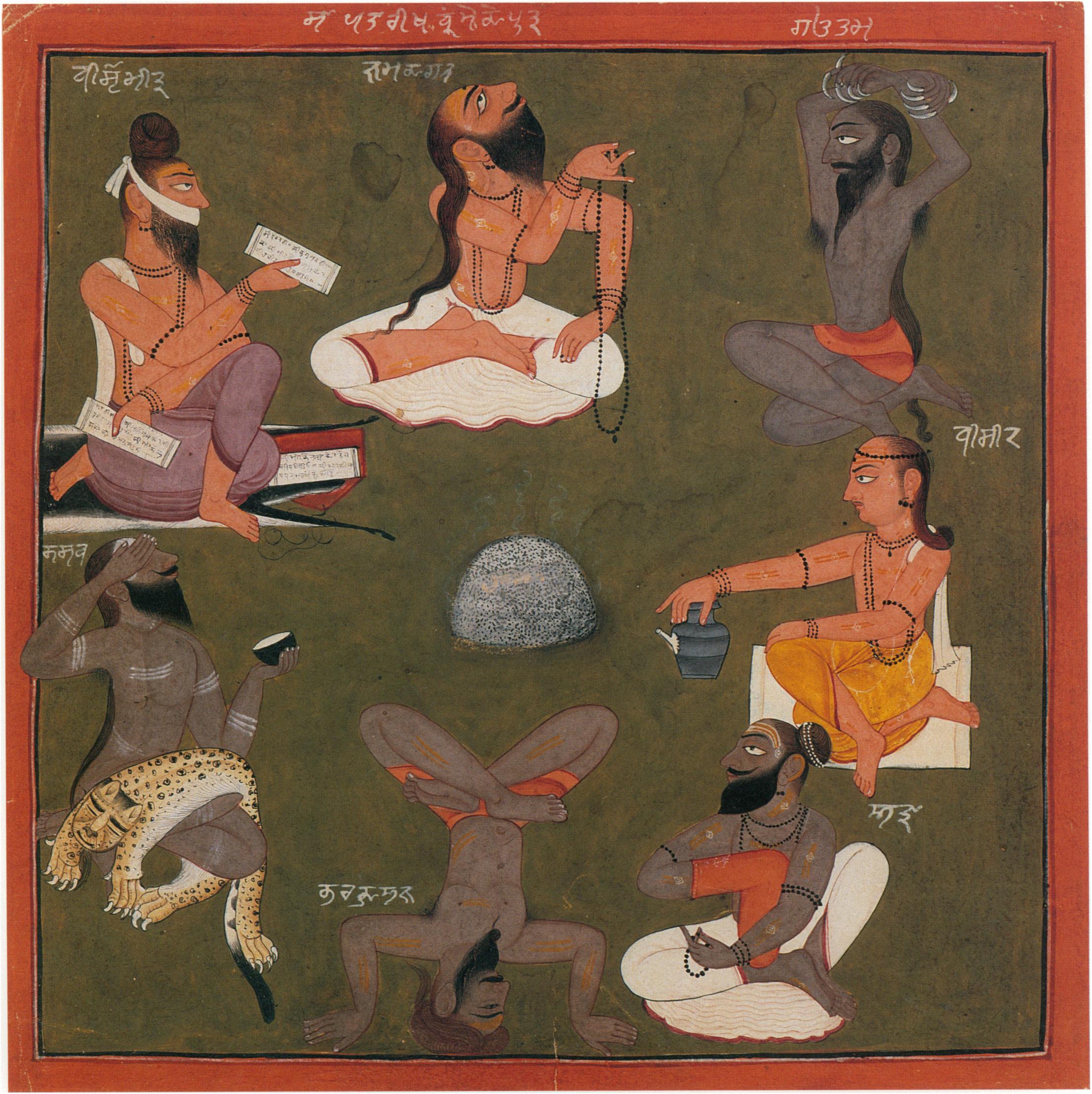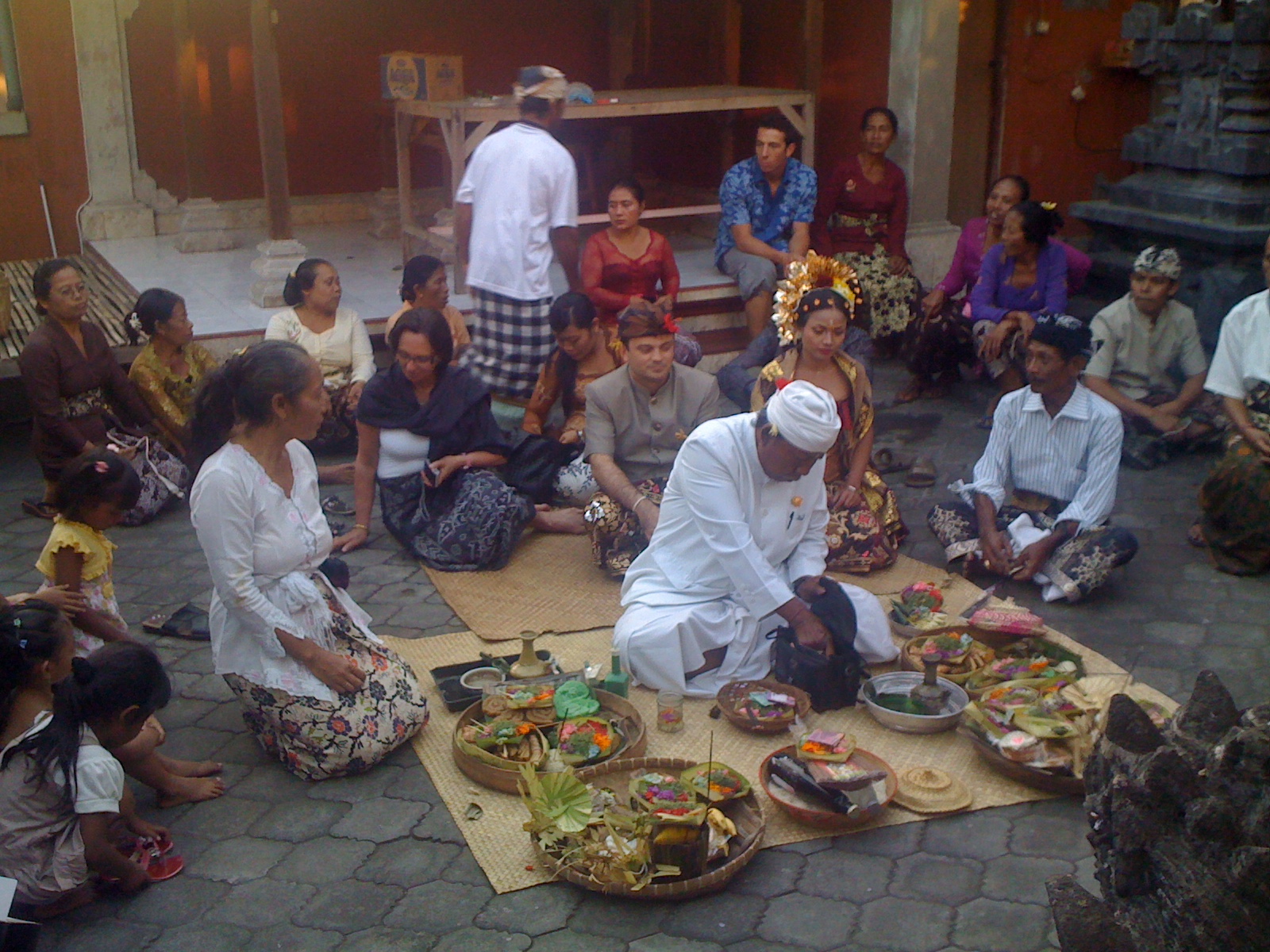|
Vashishta
Vasishtha (, ) is one of the oldest and revered Vedic rishis or sages, and one of the Saptarishis (seven great Rishis). Vasishtha is credited as the chief author of Mandala 7 of the ''Rigveda''. Vasishtha and his family are mentioned in Rigvedic verse 10.167.4, other Rigvedic mandalas and in many Vedic texts. His ideas have been influential and he was called the first sage of the Vedanta school of Hindu philosophy by Adi Shankara. The '' Yoga Vasishtha'', ''Vasishtha Samhita'', as well as some versions of the ''Agni Purana'' and ''Vishnu Purana'' are attributed to him. He is the subject of many stories, such as him being in possession of the divine cow Kamadhenu and Nandini her child, who could grant anything to their owners. He is famous in Hindu stories for his legendary conflicts with sage Vishvamitra. In the Ramayana, he was the family priest of the Raghu dynasty and teacher of Rama and his brothers. Etymology Vasishtha is also spelled as ' and is Sanskrit for "most exc ... [...More Info...] [...Related Items...] OR: [Wikipedia] [Google] [Baidu] |
Vishvamitra
Vishvamitra (, ) is one of the most venerated rishis or sages of ancient India. Vishvamitra is one of the seven Brahmarshi. According to Hindu tradition, he is stated to have written most of the Mandala 3 of the Rigveda, including the Gayatri Mantra (3.62.10). The Puranas mention that only 24 rishis since antiquity have understood the whole meaning of —and thus wielded the whole power of — the Gayatri Mantra. Vishvamitra is supposed to have been the first, and Yajnavalkya the last. Before renouncing his kingdom and royal status, Brahmarishi Vishvamitra was a king, and thus he retained the title of Rajarshi, or 'royal sage'. Textual background Historically, Viśvāmitra Gāthina was a Rigvedic rishi who was the chief author of Mandala 3 of the Rigveda. Viśvāmitra was taught by Jamadagni Bhārgava. He was the purohita of the Bharata tribal king Sudās, until he was replaced by Vasiṣṭha. He aided the Bharatas in crossing the Vipāśa and Śutudrī rivers (mod ... [...More Info...] [...Related Items...] OR: [Wikipedia] [Google] [Baidu] |
Saptarshi
The Saptarshi ( ) are the seven seers of ancient India who are extolled in the Vedas, and other Hindu literature such as the Skanda Purana. The Vedic Samhitas never enumerate these rishis by name, although later Vedic texts such as the Brahmanas and Upanisads do, so these constellations are easily recognizable. Hindu sacred text An early prototype of the "Saptarishi" concept may stem from the six families associated with the six "Family Books" in the Rigveda Samhita (Mandalas 2–7 in ascending order: Gṛtsamāda, Viśvāmitra, Vāmadeva, Atri, Bharadvaja, Vasiṣṭha). While not a "Family Book", Mandala 8 is mostly attributed to Kaṇva, who could be considered the 7th prototypical Saptarishi. The earliest formal list of the seven rishis is given by Jaiminiya Brahmana 2.218–221: Agastya, Atri, Bhardwaja, Gautama, Jamadagni, Vashistha, and Vishvamitra followed by Brihadaranyaka Upanisad 2.2.6 with a slightly different list: Atri, Bharadvaja, Gautama, J ... [...More Info...] [...Related Items...] OR: [Wikipedia] [Google] [Baidu] |
Saptarishi
The Saptarshi ( ) are the seven seers of ancient India who are extolled in the Vedas, and other Hindu literature such as the Skanda Purana. The Vedic Samhitas never enumerate these rishis by name, although later Vedic texts such as the Brahmanas and Upanisads do, so these constellations are easily recognizable. Hindu sacred text An early prototype of the "Saptarishi" concept may stem from the six families associated with the six "Family Books" in the Rigveda Samhita (Mandalas 2–7 in ascending order: Gṛtsamāda, Viśvāmitra, Vāmadeva, Atri, Bharadvaja, Vasiṣṭha). While not a "Family Book", Mandala 8 is mostly attributed to Kaṇva, who could be considered the 7th prototypical Saptarishi. The earliest formal list of the seven rishis is given by Jaiminiya Brahmana 2.218–221: Agastya, Atri, Bhardwaja, Gautama, Jamadagni, Vashistha, and Vishvamitra followed by Brihadaranyaka Upanisad 2.2.6 with a slightly different list: Atri, Bharadvaja, Gautama ... [...More Info...] [...Related Items...] OR: [Wikipedia] [Google] [Baidu] |
Arundhati (Hinduism)
Arundhati () is the wife of the sage Vasishtha, one of the seven sages (Saptarshi) of Hinduism. Etymology The name in Sanskrit literally means 'washed by the rays of sun', from 'sun rays', and , 'washed'. Legend Arundhati's birth and life are mentioned in various Hindu scriptures. The birth of Arundhati is found in the Shiva Purana and Bhagavata Purana. The instruction by Brahma to Arundhati is described in the Uttara Kanda of the Ramcharitmanas. The rivalry between Vishvamitra and Vasishtha which leads to the death of her hundred sons is described in the Balakanda of Valmiki's Ramayana. The Mahabharata and several Brahmana works describe her sons, including Shakti, and grandson Parashara. Arundhati's meetings with Sita and Rama are mentioned in the Ramayana, Ramcharitmanas and Vinaya Patrika.Rambhadracharya 1994, pp. ''iii—vi''. Her role in pleading Shiva to marry Parvati is described in the sixth canto of Kumarasambhava of Kalidasa.Kale, pp. 197-199 As per the Bhag ... [...More Info...] [...Related Items...] OR: [Wikipedia] [Google] [Baidu] |
Vedanta
''Vedanta'' (; , ), also known as ''Uttara Mīmāṃsā'', is one of the six orthodox (Āstika and nāstika, ''āstika'') traditions of Hindu philosophy and textual exegesis. The word ''Vedanta'' means 'conclusion of the Vedas', and encompasses the ideas that emerged from, or aligned and reinterpreted, the speculations and enumerations contained in the Upanishads, focusing, with varying emphasis, on devotion, knowledge and liberation. Vedanta developed into many traditions, all of which give their specific interpretations of a common group of texts called the ''Prasthanatrayi, Prasthānatrayī'', translated as 'the three sources': the ''Upanishads'', the ''Brahma Sutras'', and the ''Bhagavad Gita''. All Vedanta traditions are exegetical in nature, but also contain extensive discussions on ontology, soteriology, and epistemology, even as there is much disagreement among the various traditions. Independently considered, they may seem completely disparate due to the pronounced ... [...More Info...] [...Related Items...] OR: [Wikipedia] [Google] [Baidu] |
Bharatas (tribe)
The Bharatas were an early Vedic that existed in the latter half of the second millennium B.C.E. The earliest mentioned location of the Bharatas was on the Sarasvatī River. Led by the tribal king Divodāsa, the Bharatas moved through the Hindu Kush mountains and defeated Śambara. Divodāsa's descendant, Sudās, won the Battle of the Ten Kings against a Pūru-led coalition, after which the initial compilation of hymns of the R̥gveda was carried out. After the battle, the Bharatas and other Pūru clans eventually formed the Kuru kingdom, which was the first attested state in Indian history. Etymology The name ''Bharata'' is of Indo-Aryan and Indo-Iranian origin, meaning "bearers" or "carriers". History Two Bharatas, Devaśravas Bhārata and Devavāta Bhārata, are mentioned as living near the Āpayā, Sarasvatī and Dr̥ṣadvatī rivers. Devavāta's son, Sṛñjaya Daivavāta, defeated the Turvaśas, and is mentioned alongside Abhyāvartin Cāyamāna who def ... [...More Info...] [...Related Items...] OR: [Wikipedia] [Google] [Baidu] |
Sudas
''For other uses, see Suda (other) and Souda (other) Sudās Paijavana was an Indo-Aryan tribal king of the Bharatas, during the main or middle Rigvedic period (c. 14th century BCE). He led his tribe to victory in the Battle of the Ten Kings near the Paruṣṇī (modern Ravi River) in Punjab, defeating an alliance of the powerful Puru tribe with other tribes, for which he was eulogized by his purohita Vashistha in a hymn of the Rigveda. His victory established the ascendency of the Bhārata clan, allowing them to move eastwards and settle in Kurukshetra, paving the way for the emergence of the Kuru "super-tribe" or tribal union, which dominated northern India in the subsequent period. Family Sudās' ancestors include Pijavana, Divodāsa Atithigva, and Devavant, although scholars disagree regarding the order of these ancestors chronologically. According to Witzel, Divodāsa was the father of Sudās, but he includes Pijavana on the grid of Bharata ... [...More Info...] [...Related Items...] OR: [Wikipedia] [Google] [Baidu] |
Purohita
Purohita (), in the Hindu context, means '' chaplain'' or ''family priest'' within the Vedic priesthood. In Thailand and Cambodia, it refers to the royal chaplains. A ''tīrthapurohit'' is a priest/ritual performer (''purohit'') at a sacred site (''tīrtha''). Etymology The word ''purohita'' derives from the Sanskrit, ''puras'' meaning "front", and ''hita'', "placed". The word is also used synonymously with the word '' pandit'', which also means "priest". '' Tirtha purohita'' means the ''purohita'' who sit at the fords of the holy rivers or holy tanks and who have maintained the records of the forefathers of the Hindu family for thousands of years. ''Purohita'' can refer to a house priest. Another less-formal name for teerth purohits is ''panda'', which is derived from the word ''pandit'' (from the Sanskrit ''paṇḍita'', meaning "learned man"). Education In India, literate men from the Brahmin varna who desire to become ''purohitas'' receive special training both in th ... [...More Info...] [...Related Items...] OR: [Wikipedia] [Google] [Baidu] |
Rama
Rama (; , , ) is a major deity in Hinduism. He is worshipped as the seventh and one of the most popular avatars of Vishnu. In Rama-centric Hindu traditions, he is considered the Supreme Being. Also considered as the ideal man (''maryāda'' ''puruṣottama''), Rama is the male protagonist of the Hindu epic '' Ramayana''. His birth is celebrated every year on Rama Navami, which falls on the ninth day of the bright half ( Shukla Paksha) of the lunar cycle of Chaitra (March–April), the first month in the Hindu calendar. According to the ''Ramayana'', Rama was born to Dasaratha and his first wife Kausalya in Ayodhya, the capital of the Kingdom of Kosala. His siblings included Lakshmana, Bharata, and Shatrughna. He married Sita. Born in a royal family, Rama's life is described in the Hindu texts as one challenged by unexpected changes, such as an exile into impoverished and difficult circumstances, and challenges of ethical questions and moral dilemmas. The most not ... [...More Info...] [...Related Items...] OR: [Wikipedia] [Google] [Baidu] |
Raghu Dynasty
The Solar dynasty or (; ), also called the Ikshvaku dynasty, is a legendary Indian dynasty said to have been founded by Ikshvaku. In Hindu literature, it ruled the Kosala Kingdom, with its capital at Ayodhya, and later at Shravasti. They worshipped their clan deity, Surya (a Hindu solar deity), after whom the dynasty is named. Along with the Lunar dynasty, the Solar dynasty comprises one of the main lineages of the Kshatriya varna in Hinduism. According to Jain literature, the first ''Tirthankara'' of Jainism, Rishabhanatha himself, was King Ikshvaku. Twenty-one further ''Tirthankaras'' were born in this dynasty. According to Buddhist literature, Gautama Buddha descended from the this dynasty. The important personalities belonging to this royal house are Mandhatri, Muchukunda, Ambarisha, Bharata, Bahubali, Harishchandra, Dilīpa, Sagara, [...More Info...] [...Related Items...] OR: [Wikipedia] [Google] [Baidu] |
Ramayana
The ''Ramayana'' (; ), also known as ''Valmiki Ramayana'', as traditionally attributed to Valmiki, is a smriti text (also described as a Sanskrit literature, Sanskrit Indian epic poetry, epic) from ancient India, one of the two important epics of Hinduism known as the ''Itihasas'', the other being the ''Mahabharata''. The epic narrates the life of Rama, the seventh ''avatar'' of the Hindu deity Vishnu, who is a prince of Ayodhya (Ramayana), Ayodhya in the kingdom of Kosala. The epic follows Exile of Lord Rama, his fourteen-year exile to the forest urged by his father King Dasharatha, on the request of Rama's stepmother Kaikeyi; his travels across the forests in the Indian subcontinent with his wife Sita and brother Lakshmana; the kidnapping of Sita by Ravana, the king of Lanka, that resulted in bloodbath; and Rama's eventual return to Ayodhya (Ramayana), Ayodhya along with Sita to be crowned as a king amidst jubilation and celebration. Scholarly estimates for the earliest stage ... [...More Info...] [...Related Items...] OR: [Wikipedia] [Google] [Baidu] |
Kamadhenu
Kamadhenu (, , ), also known as Surabhi (, or , ), is a divine bovine-goddess described in Hinduism as the mother of all cows. She is a miraculous cow of plenty who provides her owner whatever they desire and is often portrayed as the mother of other cattle. In iconography, she is generally depicted as a white cow with a female head and breasts, the wings of a bird, and the tail of a peafowl or as a white cow containing various deities within her body. Kamadhenu is not worshipped independently as a goddess. Rather, she is honored by the Hindu veneration of cows, who are regarded as her earthly embodiments. Hindu scriptures provide diverse accounts of the birth of Kamadhenu. While some narrate that she emerged from the churning of the cosmic ocean, others describe her as the daughter of the creator god Daksha, and as the wife of the sage Kashyapa. Still other scriptures narrate that Kamadhenu was in the possession of either Jamadagni or Vashista (both ancient sages), and that ... [...More Info...] [...Related Items...] OR: [Wikipedia] [Google] [Baidu] |







